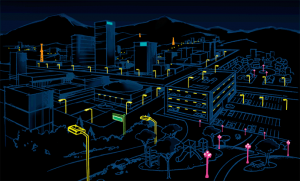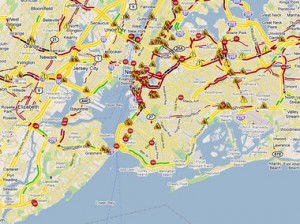“5 billion people representing 60% of the world’s population will live in urban areas by 2030”, according to the United Nations
The huge trend towards urbanization can only be sustainable if we make our cities smart. Smart to regulate themselves, make life safe and pleasant for the occupants and maximize efficiency and productivity. Smart cities will monitor themselves, make decisions on optimization and then control themselves through direct control, communications, and decision support. The Internet and Wireless Sensor Networks are key enabling technologies.


Lighting
one of the first and easiest areas to make smart that is already happening. 1st generation was timed, 2nd generation uses local ambient light sensors; 3rd generation will work as an integrated system, applying light only where and when it is needed.
Traffic congestion, routing and parking
We already see a smart network, as GPS manufacturers start to collate real time data from their customer’s devices and provide traffic monitoring and avoidance services. Smart parking systems are already monitoring their empty spaces. Harvested power sensors built directly into roads will facilitate the next generation.
Infrastructure condition monitoring
The bridge, tunnel and building collapses of the past should become completely avoidable as networked sensor monitor stress and strain and drive safe and efficient maintenance and usage models.
Pollution monitoring & control
Sound, air quality, light, RF, Electro-magnetic. All of these pollution sources will push towards intolerable limits if left uncontrolled. However, smart cities will regulate activity to optimize utility while minimizing pollution. Sensor networks will facilitate planning & development and real time control
Waste management
Garbage and sewage systems are inefficient of necessity as zero under-capacity is unacceptable. However, as deployment of local treatment such as compactors and grey water recycling ramps us, garbage management will need to be demand driven, powered by sensing and communication.
A key aspect of all of these smart city systems is the need to collect and communicate data from and to many, many sources and low cost, self powered sensors sensor and control nodes will be an enabling component.“Smart City technology investment will total $108 billion by 2020”, according to Pike Research. Venture Technologies are already providing the underlying wireless technology for a number of leading edge smart city projects.



